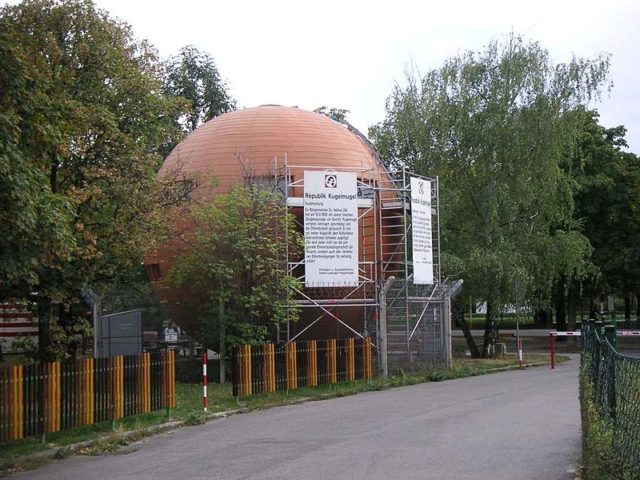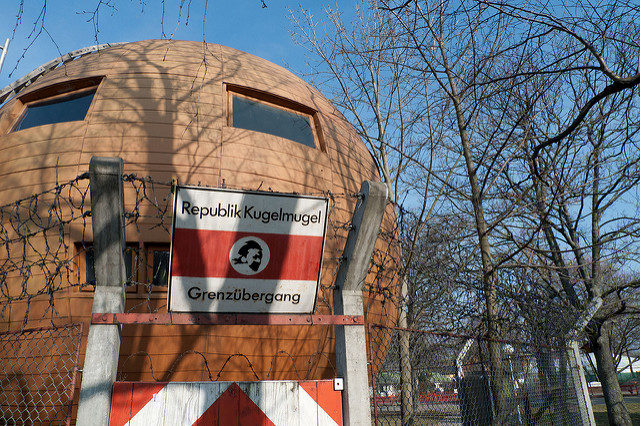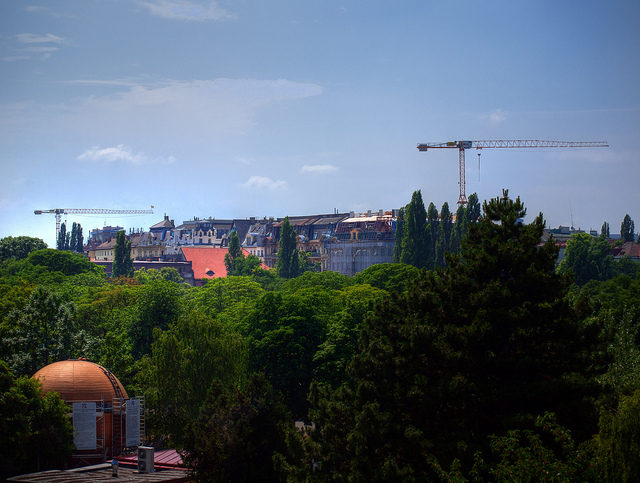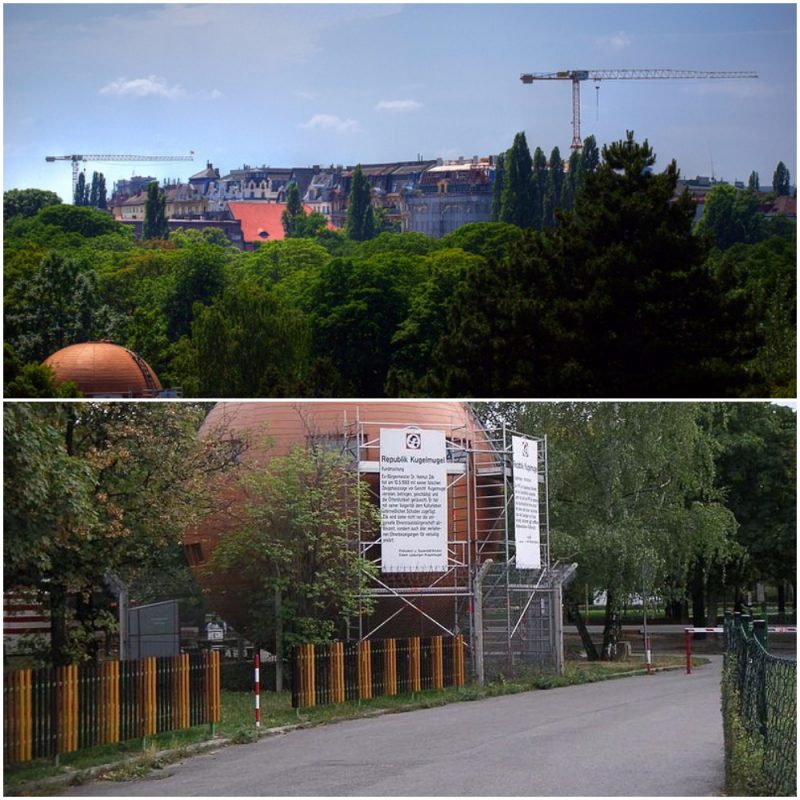In 1971, Austrian artist Edwin Lipburger designed and built a spherical house in Katzledorf, Lower Austria.
He based the house on the principle that spherical buildings are more natural and more livable spaces than square buildings, because spherical buildings reflect shapes that occur in nature. He named the house the “Kugelmugel”: in German, kugel means sphere, and the word mugel refers to bumpy fields. His vision was that of an ideal home, a bubble peacefully floating above untouched green surfaces.

However, Lipburger’s idyll was soon threatened, as Austrian authorities found the house problematic because due to its unusual nature. They refused to issue special building permits for the house and threatened to demolish it. Lipburger was furious, and he found a cunning way to stop the government from destroying his work: he declared the spherical house its own independent nation, The Republic of Kugelmugel.
This resulted in more trouble: Lipburger decided not to pay Austrian taxes, as he was the president of his own republic. He ended up being sentenced to 10 months in prison, but was saved from serving time by an official pardon from Rudolf Kirchshläger, the then president of Austria.

In 1982, the Austrian government finally agreed not to demolish the structure, so the Kugelmugel was moved to Vienna’s Prater park, where Lipburg continued to claim that it was a republic.
He enclosed it with a barbed wire and surrounded it with signs that accused the Austrian government of terrible crimes against the free expression of art.
The spherical house has the only address within the Republic: “Anti-Fascism Square No.2″. The address has since been adopted by the city of Vienna.

Read another story from us: Chan Chan: The largest pre-Columbian city in the Americas
Lipburger died in January 2015, but the Republic of Kugelmugel officially holds a population of over 650 non-resident citizens. Nowadays, is administered by Vienna’s authorities and used as a tourist attraction.
